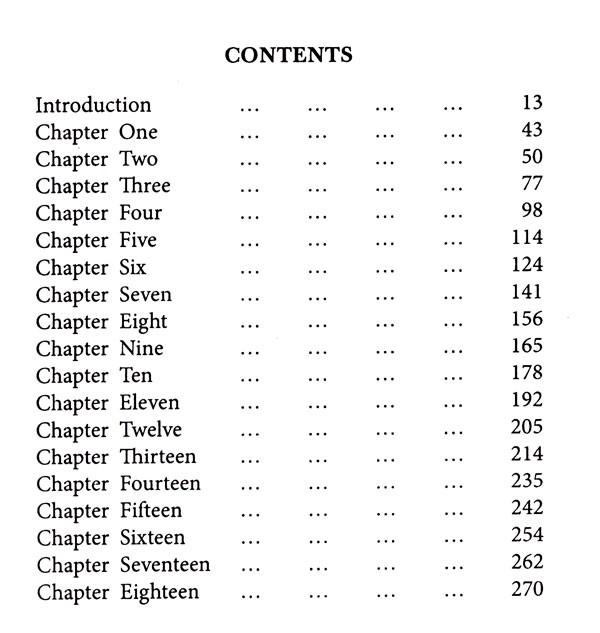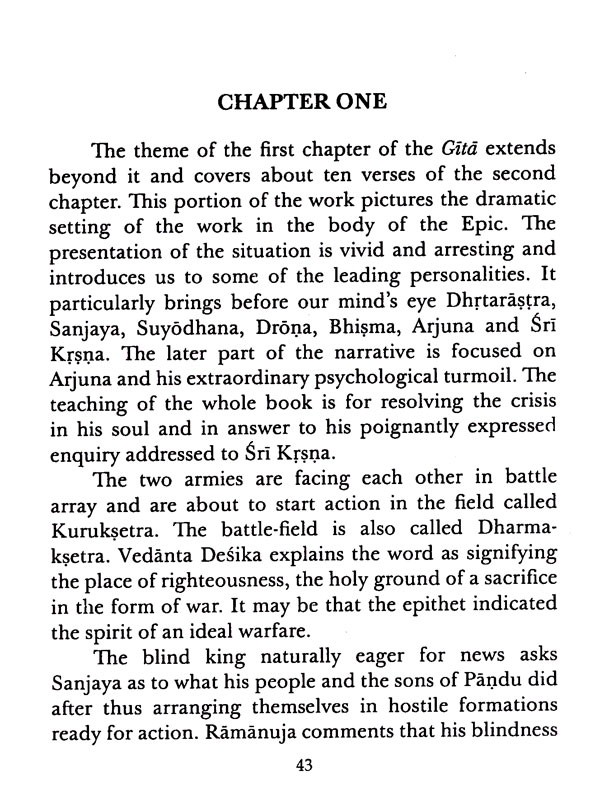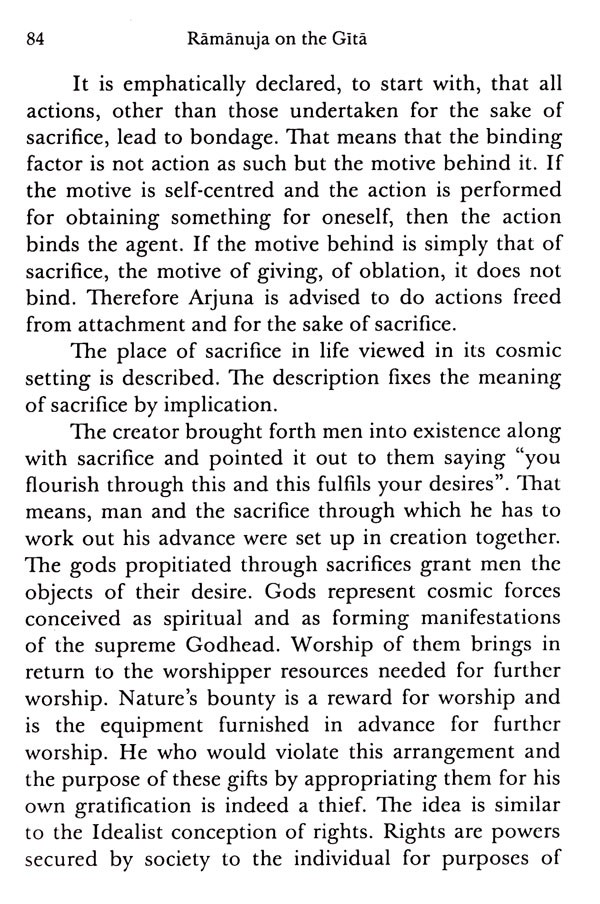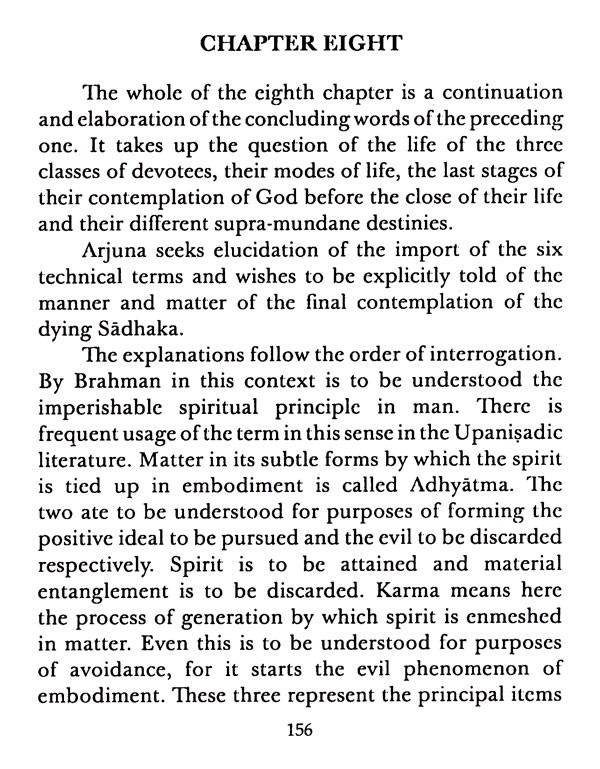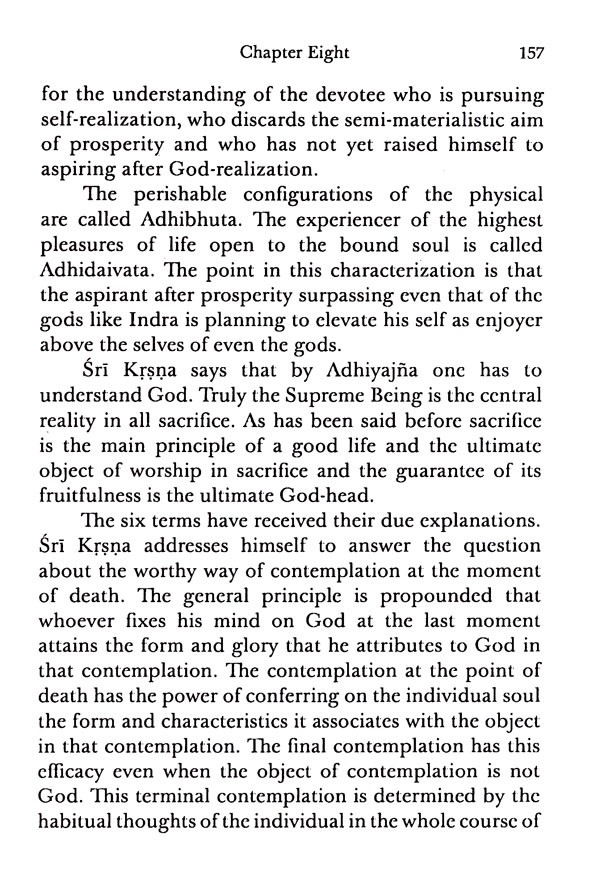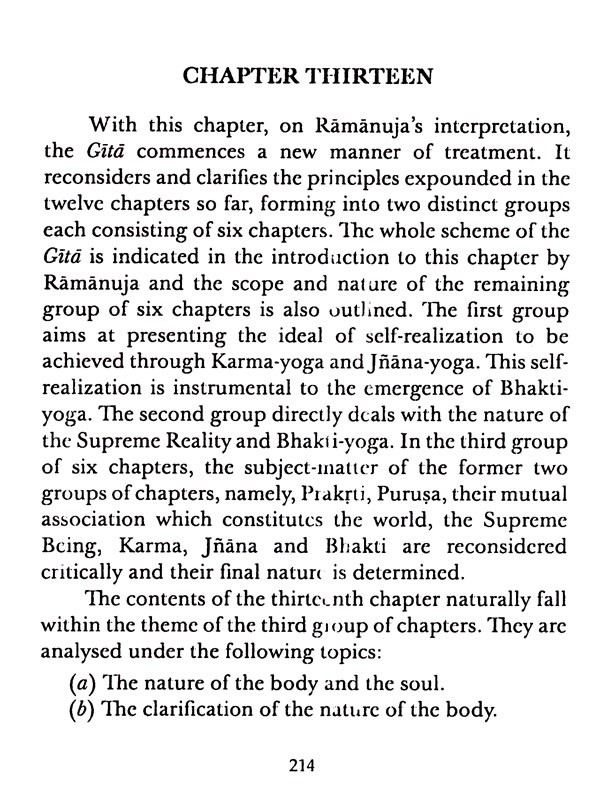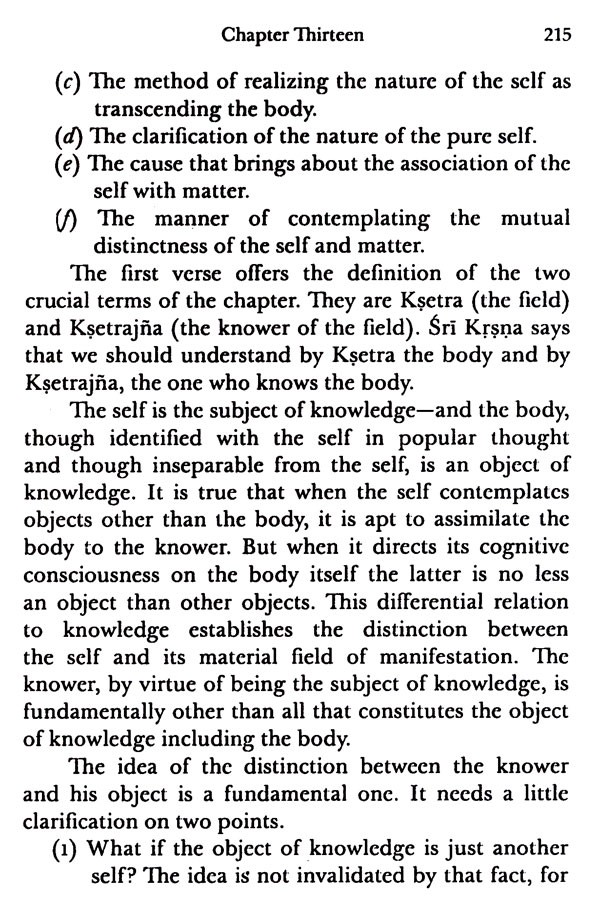
Ramanuja on The Gita
Book Specification
| Item Code: | AZA123 |
| Author: | S. S. Raghavachar |
| Publisher: | Advaita Ashrama |
| Language: | English |
| Edition: | 2017 |
| ISBN: | 9788175051201 |
| Pages: | 304 |
| Cover: | PAPERBACK |
| Other Details | 7 x 5 inches |
| Weight | 282 gm |
Book Description
This is an important and impeccable book written with singular conviction and remarkable ability. Prof. S. S. Raghavachar closely follows Sri Ramanuja's commentry on the Gita. He gives the connection from verse to verse, chapter to chapter and from satka to satka. The author brings out all these in a conspicuous manner.
The author presents clearly and concretely the comprehensive ideal of the Gita with insight, vision and authority. This is a distinct contribution to the Gita literature.
Convinced, as I am, that the best writing on the Gītā is to be found in the traditional commentaries, I offer this brief exposition of the Gitā-Bhāṣya of Rāmānuja. This particular interpretation has not entered into the modern understanding of the Gītā, as much as it ought to. The modern student of the Gītā lacks the requisite data in English as Śrī Govindāchārya's complete translation has ceased to be available and Dr. Van Buitenen has given only a condensed version. I am trying the experiment of presenting the substance of Rāmānuja's great treatise, duly fulfilling the twin requirements of economy and fidelity and carefully focusing on the basic and distinguishing contributions of the Acharya. Close correspondence with the original is maintained and in crucial contexts the exposition does the work of a translation as well. The abundant elucidation furnished by Vedānta Deśika is utilized throughout. It is hoped that this new manner of reproducing the rich and profound vision enshrined in the Bhāșya will succeed.
It is in the fitness of things that the work is sponsored under the auspices of the Śrī Rāmakṛṣṇa Aśrama, Mangalore, where all my major writings took shape under the inspiring guidance of Swami Adidevananda and the gracious encouragement of Swami Vijnananda and Swami Sundananda. I thank the Swamiji for his benedictory Foreword.
Śrī Achyut Kamath of the Sharada Press, justly famous for its fine work, is the main architect of this project and all the credit for this publication goes to his generous zeal and enlightened devotion. One cannot thank him enough.
This is an important and impeccable book written with singular conviction and remarkable ability since the lectures on the Gītā by Śrī M. Rangacharya were published. In the essays embodied in this book, Prof. S. S. Raghavachar closely follows Śrī Rāmānuja's commentary on the Gītā. Śri Rāmānuja's commentary on the Gītā is a Bhāşya, not a Vyākhyāna or Vịtti. As such he gives the connection from verse to verse, from chapter to chapter and from Şatka to Şatka. The author brings out all these in a conspicuous manner.
The Gītā presents the tenet that Śrī Krşņa is the Supreme Person, an Avatār of the Absolute into the world of men. From times immemorial generations of men and women have turned to the Gītā for the solution of their personal dilemmas. The Gītā affirms the psychological paths of Karma, Jñāna and Bhakti for the solution of the problems of life. The process of ascent is from Karma to Jñāna, from Jñāna to Bhakti. Karma is selfless work without the desire that prompts it normally. Work done in this way stimulates the power of knowledge. Jñāna is the realisation of the self as different from the modes of matter. This discipline prepares the ground for Bhakti. Bhakti is the approach through Love to the Supreme Person. The votaries of Kṛṣṇa enter His being, the Supreme Abode. Thus the Gītā affirms the reality of a personal God, the ground and the goal of human existence.
The author presents clearly and concretely the comprehensive ideal of Gītā with insight, vision and authority. This is a distinct contribution to the Gītā literature.
General Survey Of Modern Writings On The Gītā
To attempt a fresh interpretation of the Gītā in the present state of Indian scholarship may appear somewhat superfluous and may at best be construed a mere act of piety. But a rough survey of the kind of writing that has filled the field will modify the impression. It is worthwhile classifying the literary productions of modern writers on the Gītā. There is in the first place a considerable body of writing dealing with the text of the Gītā in the spirit of Indology. This class of writing deals with the age of the present text, and its homogeneous or heterogeneous character, tackling the question whether it is a composite product brought into its present shape by successive additions to a primitive and simple core, and on the latter hypothesis attempts the reconstruction of that core and the characterization of the major additions. Incidental to this type of analysis is the consideration of the question of the place of the Gītā in the Mahābhārata, whether it is a later addition to the old epic narrative or an integral and central expression of the philosophical wisdom of that vast epic. Much labour of research and exercise of historical fancy have gone into this class of writing on the Gītā. This Indological approach hardly leaves room for a consideration of the philosophical substance of the work as we find it. Therefore the question of the evaluation of the Gītā as a philosophical work does not arise. There is another type of writing on the Gītā which, in bulk and popularity, is by no means lesser. This is marked by the spirit of faith and approaches the Gītā as the supreme gospel of spiritual wisdom. We have simple translations and condensations of the lines of moral and religious guidance embodied in the work. The metaphysical and ethical questions treated in the Gītā are not handled with any thoroughness and rigour and the intention to distil the quintessence of the prescription of the Gītā for the practice of the higher life is the dominant one. The Indological outlook is set aside and the traditional view of Hinduism concerning the text is adhered to. Knotty issues in interpretation are solved with the aid of some traditional commentaries, mostly the one by Sankara. There is neither the passion for scholarship nor the effort at rethinking. This is a simple view of the Gītā as the supreme scripture and the attempt is to appropriate it as such.
**Contents and Sample Pages**
